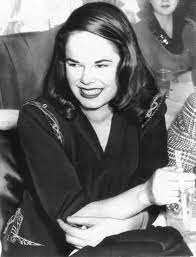First roller coaster in America opens
On June 16, 1884, the first roller coaster in America opens at Coney Island, in Brooklyn, New York. Known as a switchback railway, it was the brainchild of LaMarcus Thompson, traveled approximately six miles per hour and cost a nickel to ride. The new entertainment was an instant success and by the turn of the century there were hundreds of roller coasters around the country.
Coney Island, a name believed to have come from the Dutch Konijn Eilandt, or Rabbit Island, is a tract of land along the Atlantic Ocean discovered by explorer Henry Hudson in 1609. The first hotel opened at Coney Island in 1829 and by the post-Civil War years, the area was an established resort with theaters, restaurants and a race track. Between 1897 and 1904, three amusement parks sprang up at Coney Island–Dreamland, Luna Park and Steeplechase. By the 1920s, Coney Island was reachable by subway and summer crowds of a million people a day flocked there for rides, games, sideshows, the beach and the two-and-a-half-mile boardwalk, completed in 1923.
The hot dog is said to have been invented at Coney Island in 1867 by Charles Feltman. In 1916, a nickel hot dog stand called Nathan’s was opened by a former Feltman employee and went on to become a Coney Island institution and international franchise. Today, Nathan’s is famous not only for its hot dogs but its hot dog-eating contest, held each Fourth of July in Coney Island.
Roller coasters and amusement parks experienced a decline during the Great Depression and World War II, when Americans had less cash to spend on entertainment. Finally, in 1955, the opening of Disneyland in Anaheim, California, signaled the advent of the modern theme park and a rebirth of the roller coaster. Disneyland’s success sparked a wave of new parks and coasters. By the 1970s, parks were competing to create the most thrilling rides.
By the mid-1960s, the major amusement parks at Coney Island had shut down and the area acquired a seedy image. In recent decades it has been revitalized, however, and remains a popular tourist attraction. It's still home to the Cyclone, a wooden coaster that made its debut in 1927. Capable of speeds of 60 mph and with an 85-foot drop, the Cyclone is one of the country’s oldest coasters in operation today.
ART, LITERATURE, AND FILM HISTORY
1965
Bob Dylan records “Like A Rolling Stone”
By the spring of 1965, Bob Dylan’s presence in the world of music was beginning to be felt well outside the boundaries of his nominal genre. Within the world of folk music, he had been hailed as a hero for several years already, but now his music was capturing the attention and influencing the direction of artists like the Byrds, the Beatles and even a young Stevie Wonder. With Dylan as a direct inspiration, popular music was about to change its direction, but so was Dylan himself. On June 16, 1965, on their second day of recording at Columbia Records’ Studio A in Manhattan, he and a band featuring electric guitars and an organ laid down the master take of the song that would announce that change: “Like A Rolling Stone.” It would prove to be “folksinger” Bob Dylan’s magnum opus and, arguably, the greatest rock and roll record of all time.
SPACE EXPLORATION
1963
Soviet cosmonaut Valentina Tereshkova becomes the first woman in space
On June 16, 1963, aboard Vostok 6, Soviet Cosmonaut Valentina Tereshkova becomes the first woman to travel into space. After 48 orbits and 71 hours, she returned to earth, having spent more time in space than all U.S. astronauts combined to that date.
COLD WAR
1977
Leonid Brezhnev is elected Soviet president
Leonid Ilych Brezhnev, first secretary of the Soviet Communist Party since 1964, is elected president of the Supreme Soviet, thereby becoming both head of party and head of state. A member of the Soviet Communist Party since 1931, Brezhnev was Soviet leader Nikita Khrushchev’s protege and deputy in the early 1960s. In 1964, however, he joined in the party coup that removed Khrushchev from power, and he was named first secretary in Khrushchev’s place. As first secretary, he initially shared power with Alexei Kosygin, who succeeded Khrushchev as premier. However, Brezhnev proved a forceful leader, and he gradually emerged as the chief figure in Soviet politics.
U.S. PRESIDENTS
1858
Lincoln warns that America is becoming a “house divided”
On June 16, 1858, newly nominated senatorial candidate Abraham Lincoln addresses the Illinois Republican Convention in Springfield and warns that the nation faces a crisis that could destroy the Union. Speaking to more than 1,000 delegates in an ominous tone, Lincoln paraphrased a passage from the New Testament: “a house divided against itself cannot stand.”
ART, LITERATURE, AND FILM HISTORY
1943
Charlie Chaplin marries Oona O’Neill
Oona O’Neill, the daughter of the famed playwright Eugene O’Neill, is an 18-year-old freshly minted high-school graduate and fledgling actress when she marries 54-year-old Charles Chaplin, the internationally renowned actor, filmmaker and Hollywood legend, on June 16, 1943, in Santa Barbara, California.
CRIME
1999
SLA member captured after more than 20 years
On June 16, 1999, Kathleen Ann Soliah, a former member of the Symbionese Liberation Army (SLA), is arrested near her home in St. Paul, Minnesota. Soliah, who now calls herself Sara Jane Olson, had been evading authorities for more than 20 years. In the mid-1970s, the SLA, a small, radical American paramilitary group, made a name for itself with a series of murders, robberies and other violent acts. They were most well-known for the 1974 kidnapping of heiress Patty Hearst, who became a member of the group. In April 1975, members of the SLA robbed a bank in Carmichael, California, and, in the process, killed one of the bank’s customers, Myrna Opsahl. According to Patty Hearst, who served as the group’s getaway driver that day, Soliah took part in the robbery.
COLD WAR
1961
Russian ballet star Rudolf Nureyev defects from USSR
Rudolf Nureyev, the young star of the Soviet Union’s Kirov Opera Ballet Company, defects during a stopover in Paris. The high-profile defection was a blow to Soviet prestige and generated international interest. Nureyev became a star of Russian ballet in 1958 when, at barely 20 years old, he was made one of the Kirov Opera Ballet’s featured soloists. The Kirov and the Bolshoi ballet companies were two of the jewels of Soviet cultural diplomacy, and their performances earned worldwide accolades and respect for the arts in the USSR. In June 1961, the Kirov Company finished a run in Paris. On June 16, just as the company was preparing to board a flight home, Nureyev broke from the group and insisted that he was staying in France. According to eyewitnesses, other members of the troupe pleaded with Nureyev to rejoin them and return to the Soviet Union. The dancer refused and threw himself into the arms of airport security people, screaming, “Protect me!” The security officials took Nureyev into custody, whereupon he asked for political asylum. The Kirov Company fretted over the loss of its star and Soviet security guards fumed over Nureyev’s defection. Eventually, the troupe flew back to Russia without the dancer.
CIVIL WAR
1862
Union thwarted at the Battle of Secessionville
On June 16, 1862, a Union attempt to capture Charleston, South Carolina, is thwarted when the Confederates turn back an attack at Secessionville, just south of the city on James Island. In November 1861, Union ships captured Port Royal, South Carolina, which lay about halfway between Charleston and Savannah, Georgia. This gave the Federals an important base from which to mount operations along the southern coast.
INVENTIONS & SCIENCE
1903
Ford Motor Company incorporated
At 9:30 in the morning on June 16, 1903, Henry Ford and other prospective stockholders in the Ford Motor Company meet in Detroit to sign the official paperwork required to create a new corporation. Twelve stockholders were listed on the forms, which were signed, notarized and sent to the office of Michigan’s secretary of state. The company was officially incorporated the following day, when the secretary of state’s office received the articles of association.










Comments
Post a Comment